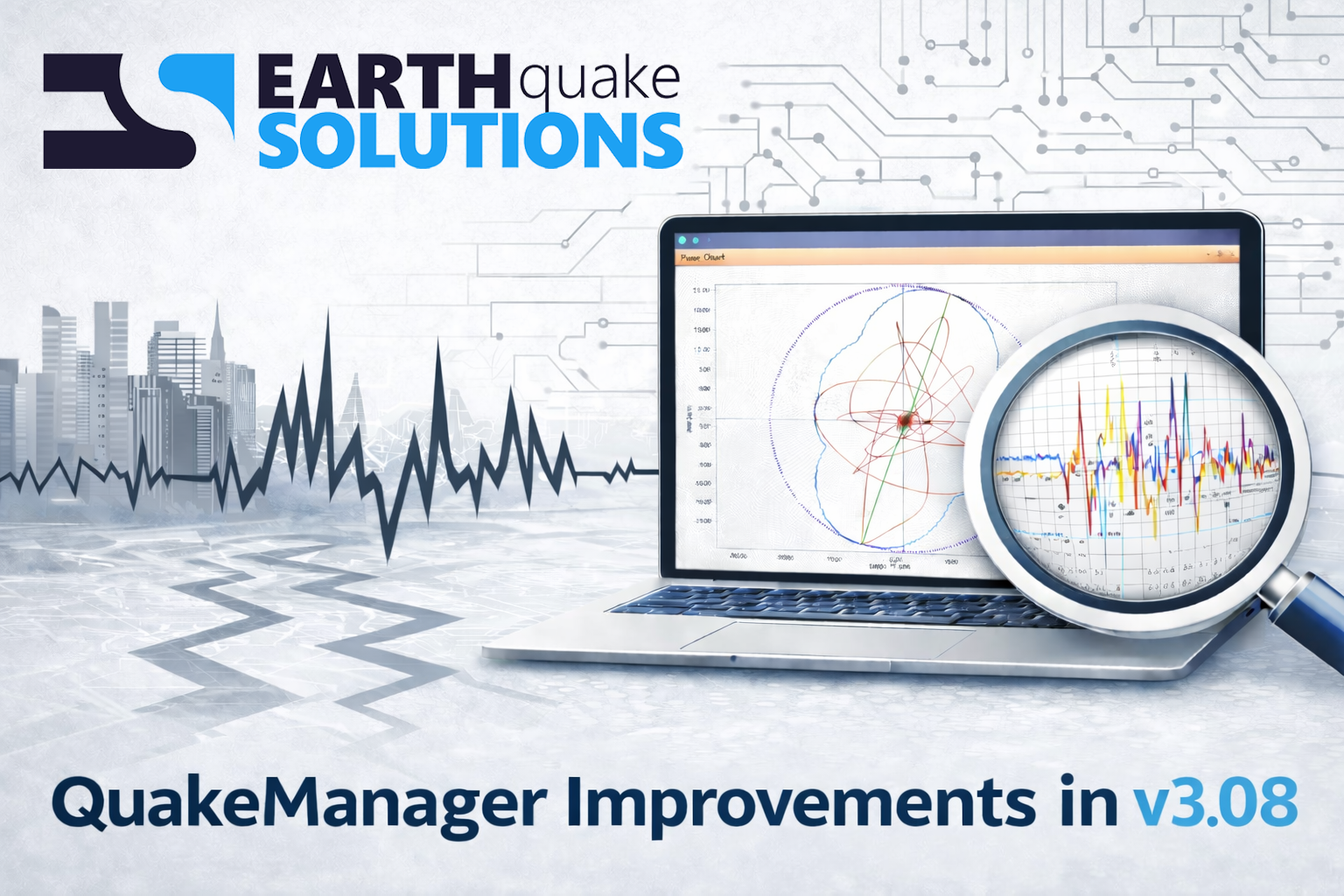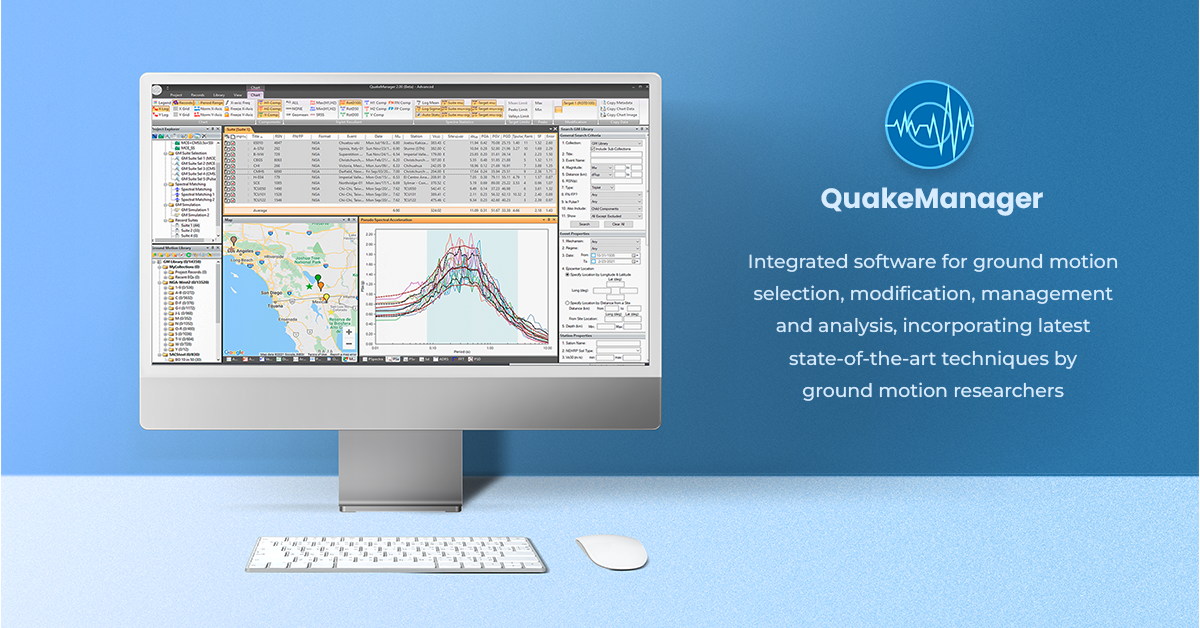
QuakeManager Improvements in v3.08
Version 3.08 adds several useful features including: Spectra Orientation Chart, Amplification Factor Chart, Pulse signal visualization, Custom Damping Ratios, Vs30 Lookup Tool and more.
- Dec 25, 2025
- QuakeManager

Version 3.08 adds several useful features including: Spectra Orientation Chart, Amplification Factor Chart, Pulse signal visualization, Custom Damping Ratios, Vs30 Lookup Tool and more.

Introducing QuakeManager Version 3 and its new features and enhancements.
